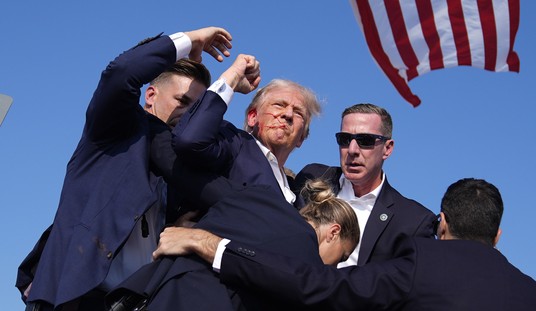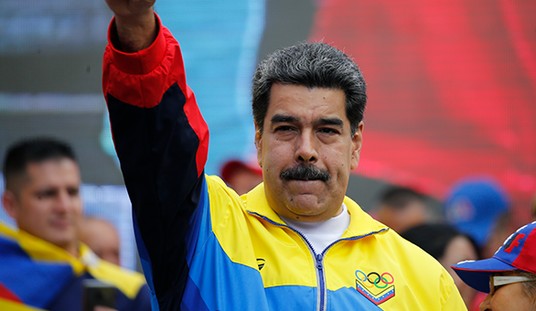“Film is finished – this could be its last Oscars,” The London Independent breathlessly trumpets in its headline, which is likely to be as accurate a prediction as the one the paper made a decade ago, when it trumpeted, “Snowfalls Are Now Just a Thing of the Past.”
Especially when nothing in the actual article ties in with that breathless headline; it’s really a look at how technology has radically transformed the movie making industry:
David O Russell, director of Silver Linings Playbook, said: “Maybe I’m old-fashioned, maybe I’m superstitious, maybe I’m romantic – I love film and it has a magic quality, it has a warmth. I may use digital cameras in a pinch because they are small and fast but I like film for its humaneness.” He is one of a number of directors determined to continue shooting on 35mm. Another is Nolan, who made the Dark Knight trilogy: “I am now constantly asked to justify why I want to shoot a film on film,” he said. Nolan likens digital to an “amazing” cookie until you realise “this is some horrible chemical crap that’s giving you this bad illusion that fools you at first.”
The need to change film reels every 10 minutes or so has created a tradition of endless breaks where stars spend almost as much time in their trailer as they do on set. But there’s no need to stop with digital – and some pampered A-listers have had a rude awakening.
The director David Fincher reveals how Robert Downey Jr staged a bizarre protest during the filming of Zodiac. “He said, ‘I can’t work like this, I never get to go to my trailer, I never can get my shit together, I’m on my feet 14 hours a day, I’m shooting all the time. He actually left jars of urine on the set, just like over in the corner and stuff. He would go off and he would pee and then he would bring it back, and it seemed like a form of protest.”
While film stars might resent having to work harder, James Cameron is excited by the “field of possibilities” offered by digital. George Lucas dismisses celluloid as “a 19th-century invention”, while David Lynch is “done” with film and Lana Wachowski describes digital cameras as “the new aesthetic”. They are among a host of Hollywood names featuring in a documentary, Side by Side, by Keanu Reeves, which recently opened in British cinemas.
The Oscar-winning cinematographer Wally Pfister said: “It’s really sad to see cameras recording imagery in an inferior way, starting to take over film.” While declaring “I am not going to trade my oil paints for a set of crayons,” he concedes: “I will be one of the last guys shooting film and Chris Nolan will be one of the last directors shooting film, but I am certain we’ll be using digital technology within the next 10 years.”
To get a sense of how quickly technology transformed the film industry in comparison with its previous rate of change, check out this Discovery Channel Movie Magic segment on matte painting. It was produced in 1994, about five minutes before digital technology began to saturate the industry. Prior to that, virtually every technique in this episode was being done by Hollywood craftsmen since the 1930s, when Linwood Dunn of RKO invented the optical printer. And the underlying concept of matte painting dates back to decades prior to that:
http://www.youtube.com/watch?v=o8bdTmU8F0s
The Academy Awards date back to the late 1920s; when the Motion Picture Academy was created by the movie industry as a way to add cachet to what was often thought of a slightly déclassé enterprise. (There’s a wonderful moment in My Favorite Year, when Peter O’Toole’s Errol Flynn-inspired character is dangling from an apartment balcony and one of the WASPy swells looks down and says, ” I think Alan Swann is beneath us!” To which another replies, “Of course he’s beneath us. He’s an actor!”)
In a recent column at Reason, Nick Gillespie explores how dated the Oscars now feel, especially when former hosts Bob Hope and Johnny Carson left the building decades ago:
Week after week, A&E’s Hoarders showcases folks who are holding on to every litterbox their cat or child ever soiled and every Ronco pasta maker or sandwich press they ever purchased. What Faulkner said about the American South’s uniquely regional inability to move into the future – “The past is never dead. It’s not even past” – is now officially a national neurosis.
You need look no further than this Sunday’s marquee television event to grok this more fully than the title character in Faulkner’s “A Rose for Emily,” who spent years sleeping next to her lover’s corpse rather than sign up for Match.com. ABC’s “Live Oscar Sunday” begins at 7p.m. Eastern time and, if past performance is any indication of future results, the 85th Academy Awards ceremony will last longer, have less plot, and deliver fewer laughs than the director’s cut of John Carter of Mars.
Last year, the Academy of Motion Picture Arts finally located the cryogenic tube housing Billy Crystal and thawed out the well-preseved former host just in time to see a modest uptick in viewership. This year, the Academy is banking on Seth MacFarlane, the very funny and irreverent auteur behind the TV shows Family Guy and the movie Ted (which starred a stuffed animal fond of smoking pot and casual sex). In a commerical announcing his hosting duties, MacFarlane tells kids to ask their parents what the Oscars are and tells parents to ask their kids who the hell he is.
That doesn’t bode well for the Academy Awards, which has recently expanded the number of films considered for best picture and other honors in a bid to maintain relevance in a mediaverse in which individuals thankfully have ever more power to choose what they watch, where they watch it, and how they value it.
Especially when this year’s Academy Awards risk being, as Nikke Finke writes at Deadline Hollywood, four ... farging … hours … lonnnnnggggg…:
What is maybe the most anticipated Academy Awards in recent memory is also mutating into what could be one of the longest Oscars in Hollywood history. I can feel a yawnfest coming on already. Sources tells me that last week the show clocked in at 3 hours and 40 minutes. Then it was shortened. But now the telecast doesn’t even commence presenting the Best Picture Oscar until after 3 hours and 23 minutes. And that’s only if everything goes according to schedule – which it never does. The telecast’s opening number lasts a full 15 minutes in what is the prelude to the most music-filled Academy Awards ever. So this could easily become an Oscar ceremony lasting 4-plus hours. (The longest on record is 4 hours, 23 minutes in 2002.) That’s not good news for longtime Academy Awards broadcaster ABC whose research demonstrates that, after 11 PM East Coast Time, the network loses 100,000 people per minute. That could hurt ratings for Sunday’s show which contains more suspense than in recent years. At around $1.7 million to $1.8 million for a 30-second spot, the Disney-owned ABC has sold out its ad inventory at prices higher than the network has charged since 2008 when the economy started to tank.
I think I’ll stick with the latest Oscars edition of Roger Simon and Lionel Chetwynd’s Poliwood series, which, by comparison, is a lightning fast eight and a half minutes in length:










Join the conversation as a VIP Member